Hover over images for detail:
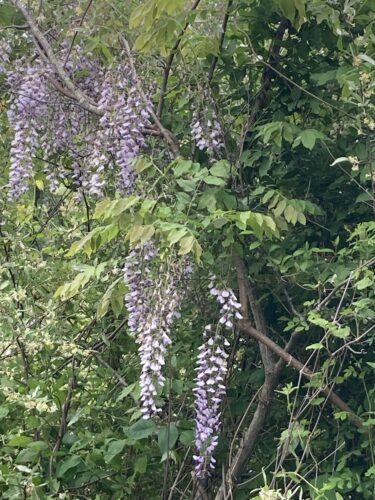 Asian Wisteria flowers
Asian Wisteria flowers
Both Japanese and Chinese wisteria bear light purple flowers in May, long seed pods and alternate compound leaves of wavy, egg-shaped leaflets, having smooth margins and strongly tapering tips. Japanese wisteria leaves are 8-12 in. long, with 13-19 leaflets. Chinese wisteria leaves are 6-10 in. long with 7-13 leaflets.
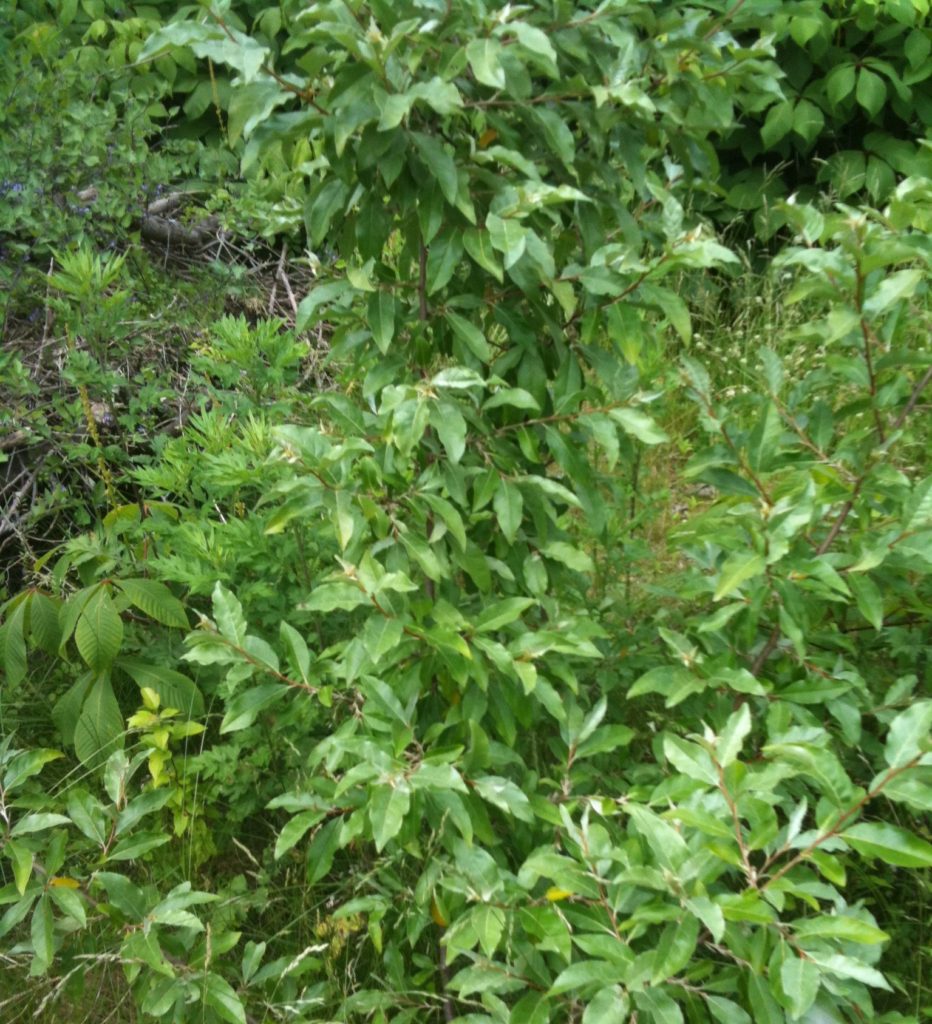 Asian Wisteria Vines
Asian Wisteria Vines
Japanese and Chinese wisteria also differ by the directional rotation of the vine around a tree — clockwise or counter-clockwise, respectively. Although both are invasive and difficult to control or eradicate, Chinese is worse. (Least aggressive is American wisteria.)
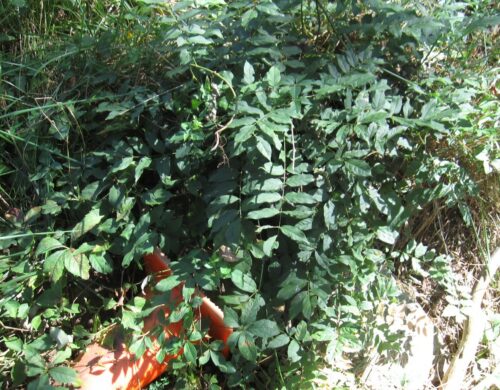 Opposite Leaflets
Opposite Leaflets
Click Vine Removal for details regarding ivy and vine removal from a host tree. Wisteria vines can emerge 10 to 15 feet from its victim tree to bring it down, making the surrounding area impenetrable.
 A Jungle of Wisteria Vines in Winter
A Jungle of Wisteria Vines in Winter
Wisteria vines reproduce by seed from the pods and by runners or stolons that can run up to 60 feet along or just beneath the ground produce shoots and roots at short intervals. These stolons should be pulled out as far as possible, cut and removed. Those that cannot be pulled out should be cut at intervals wherever possible.
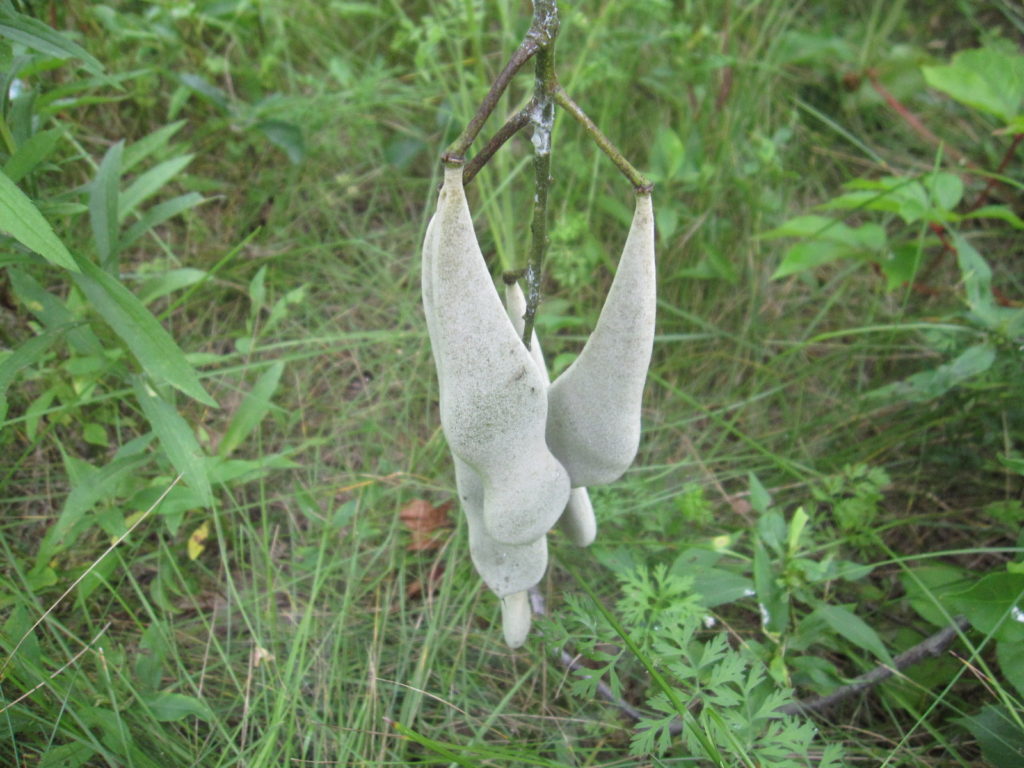 Wisteria Seed Pods
Wisteria Seed Pods
To prevent dispersal, wisteria seed pods should be removed and disposed.
 Wisteria Seeds
Wisteria Seeds
We collected and disposed of the half-inch red/brown seeds found along the ground.
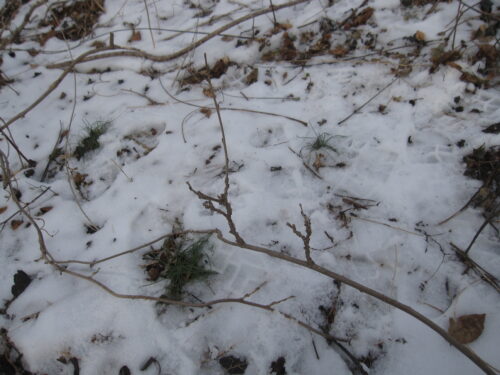 Young Wisteria Vine with Buds
Young Wisteria Vine with Buds
Cut budding vines as far into the ground as possible.
 Large Wisteria Vine Takes Down Tree
Large Wisteria Vine Takes Down Tree
Judging by their size, large, multiple vines, which strangle native trees, may themselves be mistaken for trees.
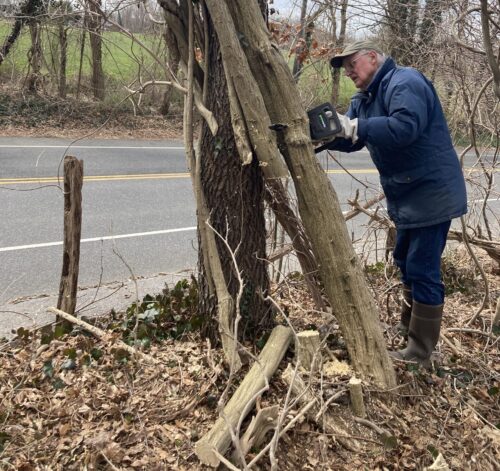 Cutting Large Vines
Cutting Large Vines
For large vines, we used a hand saw and battery operated reciprocating saw at the ground, plus a small chain saw for two cuts four feet apart on the larger vines.

Vine Stump with Annual Rings
We counted thirteen rings, indicating its young age despite its size.
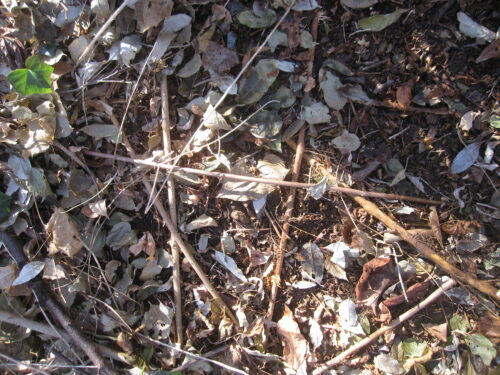 Interwoven Runners (Stolons) Along Ground
Interwoven Runners (Stolons) Along Ground
The ground should be moist to successfully uproot wisteria runners. One of the best times for uprooting is late fall and winter during a warm interval when the ground has thawed. We snipped and removed over-runners to enable uprooting the ones being pulled.
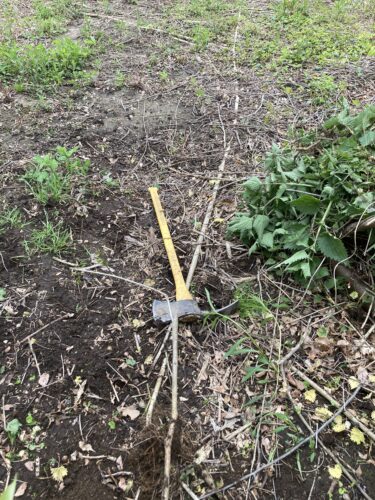 Wisteria 60 Foot Long Stolon
Wisteria 60 Foot Long Stolon
We cleared the ground of leaves, twigs and branches to see the stolons that often crisscrossed each other. Some run very long over the ground, but the smaller diameter stolons rip out easily.
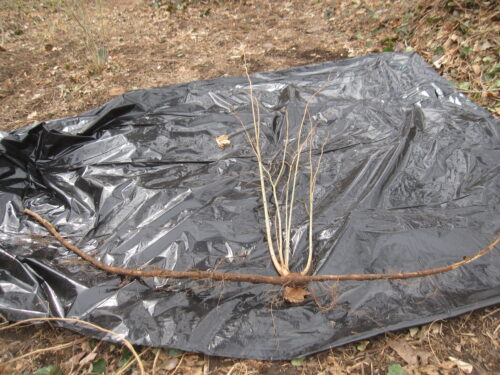 Vines Emerging at a Node
Vines Emerging at a Node
Wisteria nodes are swellings or knobs in a stolon from which stems, branches or roots emerge. Pruners or by-pass loppers work well to cut smaller stolons between the nodes. A limb saw blade on a reciprocating saw is good for larger cuts.
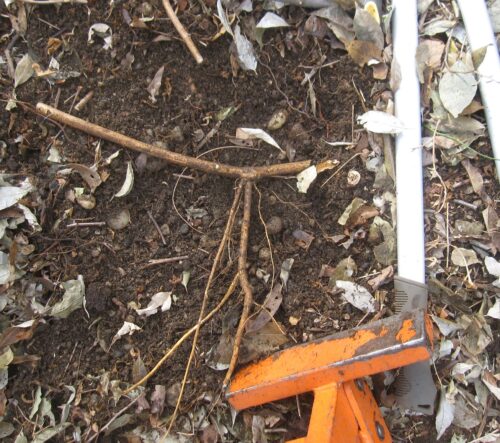 Wisteria Root at the Node
Wisteria Root at the Node
Larger nodes have deeper roots, which should be uprooted — if possible — with a weed wrench while the ground is damp.
Wisteria stolons and roots are generally yellow, whereas Oriental bittersweet roots are generally bright orange; English ivy is brown, and the knotty porcelain-berry root, reddish brown.
 Lopper with Serrated Anvil Jaw
Lopper with Serrated Anvil Jaw
One tool to pull the stolons with their roots intact is a serrated anvil jaw lopper, used as a vice. This tool grabs and provides leverage for pulling out the smaller roots. It also severs wisteria’s strong runners with a quick, firm, power cut to break the stem.
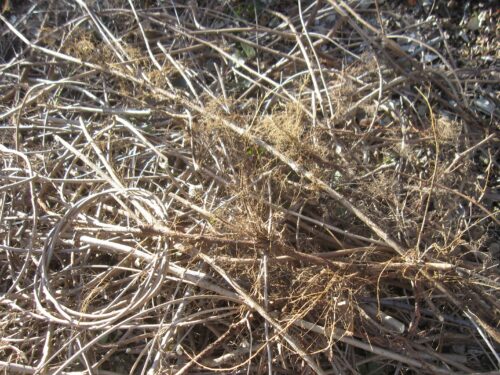 Air-Drying Uprooted Stolons
Air-Drying Uprooted Stolons
Because any portion of the severed runners/stolons that remain in contact with the ground may sprout or root at the nodes, soft/pliable woody cuttings should be air-dried above ground or bagged and disposed of.
 This Formerly Cut Stolon is Alive on the Left but Dead on the Right
This Formerly Cut Stolon is Alive on the Left but Dead on the Right
